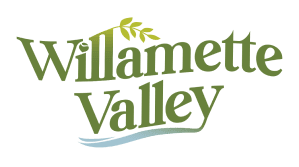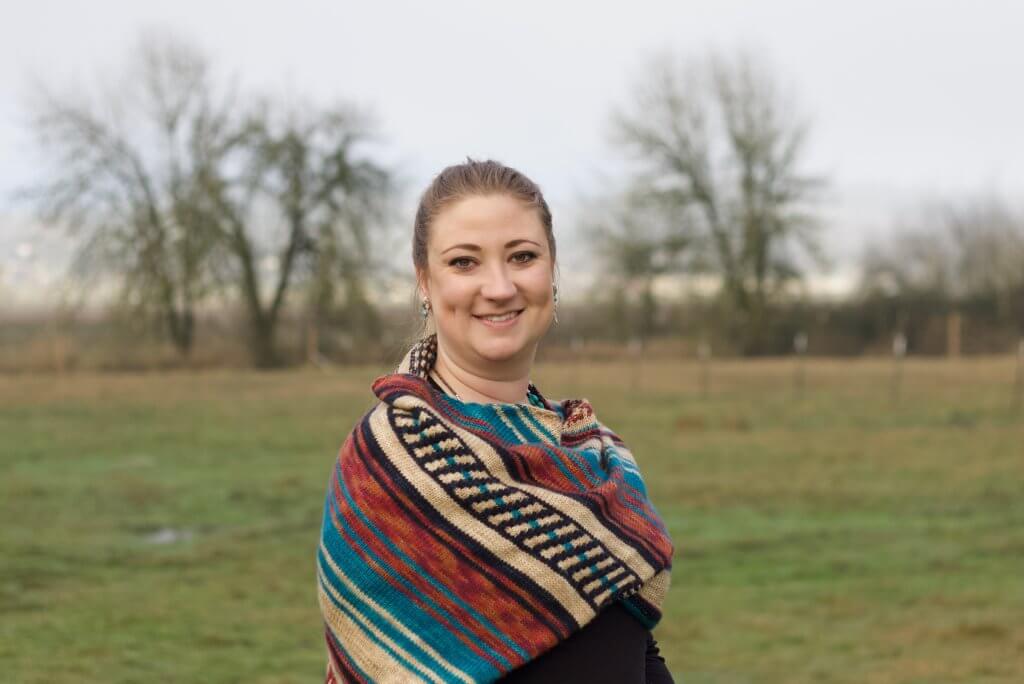

Growing up, Audrey Comerford couldn't have been closer to the agriculture of the Willamette Valley. Both of her parents were involved with local agricultural issues through the Oregon State University's (OSU) Extension Service, and she was raised around 1,000 acres of grass seed fields.
So, when Comerford graduated from high school, she did what most teenagers do-and tried to distance herself as much as possible from the family farms of her youth. She did so by enrolling at OSU, nearly an hour from home, and earning her degree in English— "which is about as far away from agriculture as you can get," she notes.
But then, as it so often does to young adults in Comerford's shoes, something happened: "I kept getting pulled back into the ag scene," she says. She worked in the OSU nursery as a student and, after graduating, went to work for Bauman's Farm and Garden just outside Woodburn. There, Comerford worked in customer service and sales-and led group tours in a role that would shape the course of her career.
Today, Comerford is an agritourism coordinator for the OSU Extension Service, helping farms set themselves up for generations of success-and working to connect visitors with experiences they can't enjoy anywhere else on Earth, as well as a way of life about which many of us know very little. Most recently, she's put those talents to use as part of the newly launched Regenerative Destination program, where she's working to boost more sustainable travel, deepen relationships between visitors and their destinations, and advocate for the farmers who make the Willamette Valley what it is.
It's a lot of work, but it's a job Comerford's been doing, in one form or another, her whole life.

In a sense, those group tours at Bauman's Farm and Garden changed the course of Comerford's career.
In her role, Comerford led farm tours-mostly for elementary school students, along with the occasional middle school class-during Bauman's annual harvest festival. At a certain point on each tour, the group would stop at the farm's animal barn, which hosted goats, alpacas, and other critters.
On one of those tours, she remembers a young boy asking what a certain animal was. Comerford was stunned that this young child couldn't recognize the Jersey calf, an iconic dairy cow, before him. She brushed it off, though, figuring he was a city kid who didn't know much about farm animals.
But then Comerford was asked the same question another dozen times over the following three weeks. "Some folks thought it was a deer, and some folks didn't know what it was at all," she says. "That was a real lightbulb moment for me-because how many other kids were not asking me that question, but thinking the same thing?"
The Willamette Valley produces more than 170 crops and livestock each year-from tart marionberries (developed at OSU) to hazelnuts (99% of all hazelnuts eaten in the U.S. come from Oregon) and beyond. So renowned is our region's culinary scene, in fact, that we don't define our food scene by a certain dish or flavor-but through fresh, local, in-season ingredients that are used in everything from basic burgers to internationally inspired fare.
Yet Comerford saw a disconnect between those celebrated cuisines and the farms that produced the crucial ingredients. So she joined a growing movement to help change all that.

Comerford eventually landed with the OSU Extension Service, where she works as an agritourism coordinator in Marion, Polk, and Yamhill counties. That role puts her square in the middle of family farms that may open their farms for tours or sell products straight to consumers, the visitors who frequent these businesses, and the organizations (such as the Willamette Valley Visitors Association) that promote agriculture in the region.
"Agritourism" is a phrase that blends agriculture and tourism. If you've ever sipped wine in a vineyard, cut your own Christmas tree or visited a pumpkin patch, drank a beer in the middle of a hop farm, plucked berries from a U-pick orchard, or purchased fresh produce at a roadside market, you've engaged in what's called agritourism.
And in doing so, you entered this vast ecosystem that goes beyond whatever you're hungry or thirsty for on a given trip. Family farms are always looking to improve revenue, so they may open their property for tours, build an on-site store that sells fresh and local goods, establish relationships with local restaurateurs, and so forth. Eventually, several of these farms, vineyards, and eateries may come together under the banner of farm loops or food trails, further increasing their exposure to curious visitors. And then tourism organizations share the stories of these hard-working, creative entrepreneurs-hopefully helping a growing agricultural scene, well, bear fruit.
At the heart of it all, at least in the Willamette Valley, is Comerford-who works with each of those groups to make the most of their space in those ecosystems.
Working with farms, Comerford provides educational materials, answers questions, offers resources and training programs (such as a self-paced online course that helps farms develop visitor-focused experiences), and more. Working with tourism organizations, she develops and passes along best practices, recommendations, and strategies for most effectively marketing these farms, food trails, and other businesses.
And while she works less with the general public, Comerford is still active in community engagement, helping visitors understand the occasionally unpredictable nature of life on a working farm; you never know, after all, when inclement weather might force a farmer to shift gears, or if certain crops ripen a few days early. Both events can have impacts on the visitor experience, and Comerford works to help the general public understand that.
If you've visited a farm around the Willamette Valley in recent months, you might have seen Comerford's work without realizing it. Since 2018, Comerford has worked with the Oregon Farm Loop program, which currently boasts four self-guided tours of farms, wineries, and more throughout the Willamette Valley; she's also one of the project leads for the Great Oaks Food Trail, which brings together nearly 50 food-focused stops throughout Polk County.

Comerford admits that she faces a variety of challenges in her role-not the least of which is helping everyone understand what "agritourism" means in the first place. "'Agritourism' is a loosely defined, kind of a gray concept," she says. "There's no one set definition."
But the common goal, no matter who she's working with or how Comerford is doing it, is advocating for and helping tell the stories of hard-working farmers all over the Willamette Valley. "Some farmers may have been there for five years, and some may have been there for four or five generations," she says-but each has stories that resonate with those who hear them.
She's hoping to help those stories reach new audiences while working with the Regenerative Destination program, a first-of-its-kind effort in the Willamette Valley that's being spearheaded by the Transformational Travel Council and Willamette Valley Visitors Association.
Comerford, a regenerator in that pilot program, hopes change those conversations and help stories reach a wider audience by increasing awareness and educating visitors on a way of life with which many of us have only a passing familiarity-like those young students who couldn't identify a Jersey calf back at Bauman's Farm and Garden. Ultimately, the goal is to create connections that last long after visitors return home-like when they see yarn produced by Willamette Valley alpacas and fiber artists, wine crafted by regional vintners, and food products from local producers.
"More and more of the general public is generations removed from a farm; no longer do people have those direct ties to what farming, ranching, and agriculture actually is and what it entails as a lifestyle with all that hard work," she says. "I would love to see the general public being extremely proud of the Willamette Valley and almost bragging about giving gifts that are local, that they're buying from family farms."